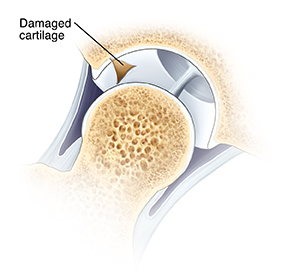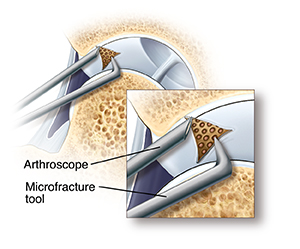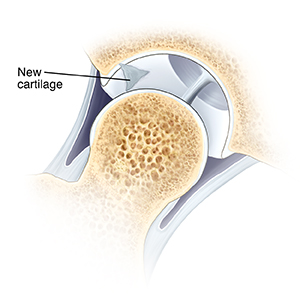Hip Arthroscopy: Repairing Chondral Damage
When the firm, smooth tissue that covers the ball and socket of the hip is damaged, it can cause painful catching in the joint. This tissue is called cartilage. Injury to cartilage is called chondral damage. Arthroscopy is a surgery method that uses only small incisions and small tools. It can be done to fix chondral damage.
In the operating room
Just before surgery, you may be asked several times which hip is to be treated. This is a standard safety measure in the operating room. You will likely receive medicine (anesthesia) to make you sleep.
During the procedure
After you receive anesthesia, your leg is gently pulled to widen the hip joint. Next, the surgeon makes a few small incisions called portals. Through these portals, they insert surgical tools, including the arthroscope. The arthroscope sends images of the joint to a screen. These images allow the surgeon to look inside the joint. The joint is filled with sterile fluid to help the surgeon see more clearly.

Repairing chondral damage
If the damaged cartilage is loose, it is removed. If the cartilage is missing, the exposed bone may be shaved to smooth it. Or small holes may be placed in the bone (microfracture). This allows new cartilage to form. Once the surgeon finishes, the portals are closed and bandaged. Then you are taken to the recovery room.

